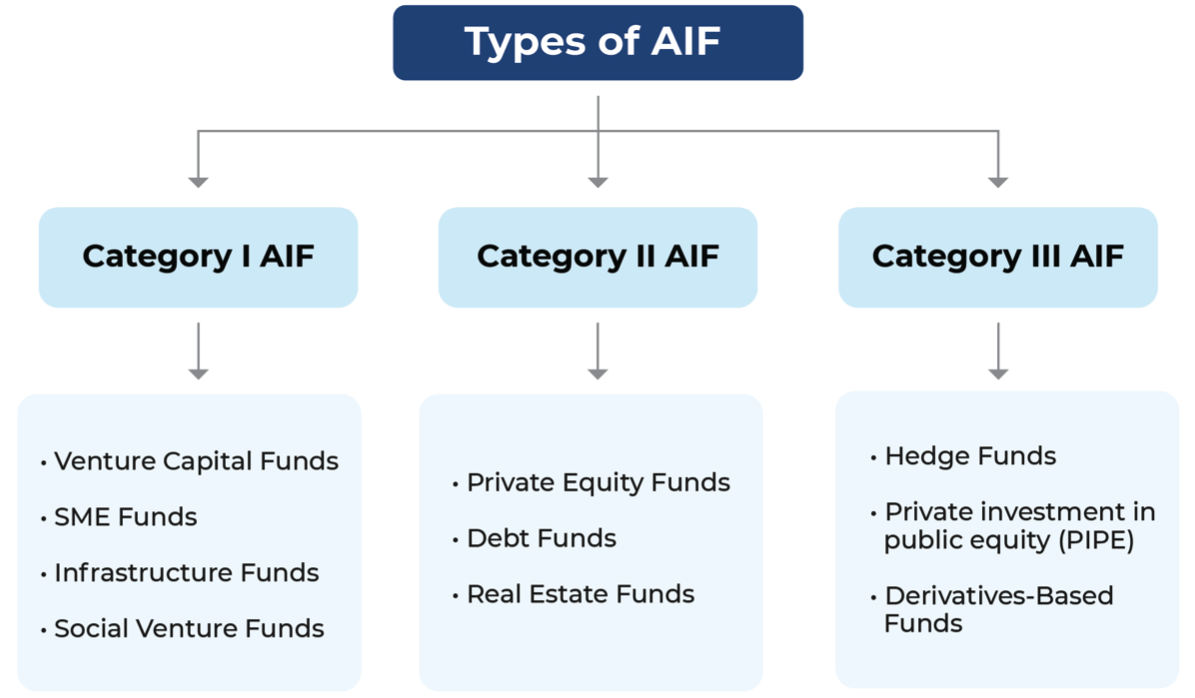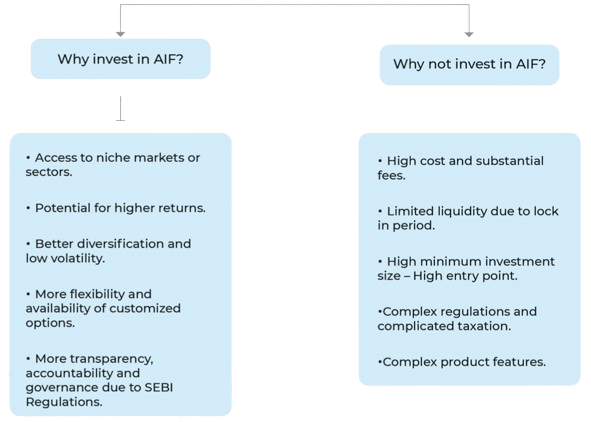In recent years, the investment preferences of High-Net-Worth Individuals (HNIs) and Ultra-High-Net-Worth Individuals (UHNIs) have evolved considerably. Many of these investors are now looking beyond traditional asset classes like fixed income, real estate, equities, mutual funds, and commodities, aiming to enhance returns and greater portfolio diversification. This growing demand has brought Alternative Investment Funds (AIFs) into the spotlight— offering investment strategies tailored to specific financial goals, risk appetites, and investment horizons.
Is AIF quietly becoming the buzzword in modern portfolio strategies? Let’s dive into what is Alternative Investment Funds are, their different categories, the tax implications involved, and who qualifies to invest in them.
What is Alternative Investment Fund?
Alternative Investment Fund or AIF means any fund established or incorporated in India which is a privately pooled investment vehicle. It collects funds from sophisticated investors, both domestic and foreign, with the objective of investing in accordance with the pre-defined investment strategy for the benefit of its investors.
SEBI regulates such funds under SEBI AIF Regulations, 2012. AIFs are generally structured as trusts, companies or LLPs etc.
Categories of Alternative Investment Fund

Category I AIF –
- Category I Alternative Investment Funds aim to channel investments into sectors that support long-term economic growth and social welfare.
- These typically include start-ups, early-stage ventures, infrastructure projects, SME funds, social ventures funds focused on inclusive development.
- Because of their developmental role, the government often encourages them through tax benefits, regulatory support, or relaxed investment norms.
- Investors in Category I AIFS generally take a long-term view and are willing to accept higher risks in exchange for potentially substantial returns.
Category II AIF -
- Category II Alternative Investment Funds primarily invest in private businesses, debt instruments, and other structured strategies that do not fall under Category I or III.
- The target investments are companies with strong fundamentals that require capital for expansion, restructuring, or long-term growth.
- While these funds don’t benefit from specific regulatory incentives, they operate with greater flexibility and are subject to standard SEBI compliance.
- Various types of funds such as real estate funds, private equity funds (PE funds), fund of funds etc. are registered as Category II AIFs.
Category III AIF –
- Category III AIFS are designed for investors seeking high returns through complex and actively managed strategies.
- These funds can use leverage and invest in instruments like derivatives, structured credit, and arbitrage trades.
- Due to their high-risk nature, they are suitable only for experienced and well-informed investors.
- Funds registered under category III of AIF are, Private Investment in Public Equity Fund (PIPE Funds), hedge funds etc.
Who Can Invest in an AIF?
- AIFs are designed for high net-worth individual investors with substantial capital and high-risk appetite, institutional investors like banks, insurance companies etc., experienced investors having deep understanding of financial markets and accredited investors meeting SEBI’s net worth criteria generally go for investments in AIFs.
- Resident Indians, NRIs, and foreign nationals can invest in these funds.
- Minimum lock in period for Category I and II is 3 years, whereas Category III AIF may be open or close ended.
- The minimum ticket size for investors is Rs. 1 crore, while investors who are employees or directors of the AIF or its Manager, the minimum required investment is ₹25 lakh.
- The number of investors in every scheme is restricted to 1000. In case of an angel fund, no scheme shall have more than 49 angel investors.
Understanding Taxation
Since the categories are different with different investment vehicles, the tax implications are also different for each of them. Let’s see the tax implication for each of them.
Taxation in the case of Category I & II -
Nature of Income Earned by AIF | Taxability | Who Pays Tax | Applicable Tax Rate |
|---|---|---|---|
Capital Gains (non-business income) | Pass-through* | Investor | LTCG: 12.5% STCG: 15% |
Other Income (e.g., interest, dividends) | Pass-through | Investor | Taxable as per investor’s tax slab. |
Business Income | Taxed at AIF level | AIF | AIF as LLP/Company: As per applicable tax rates. AIF as Trust: 42.744% (MMR). |
Dividend Distribution Tax (DDT) | Not applicable | N/A | No DDT liability on distribution |
TDS on Income (non-business) | 10% TDS deducted at source by AIF on income distribution | Deducted by AIF | 10% TDS (subject to applicable DTAA for non-residents) |
*Pass-through status – It means that the income or loss (other than business income) generated by the fund will be taxed at the hand of the investor and not by the fund business.
Taxation in the case of Category III -
- This category of funds is taxable at the fund level.
- There is no pass-through status.
- The highest rate of tax (as per the current tax slab) is charged on the profit made by this fund
- A Category III AIF pays tax on the following four types of income as per applicable tax rates-

Why and why not invest in AIF?

Conclusion
Alternative Investment Funds (AIFs) offer the potential for diversification and enhanced returns but come with high risk, significant costs, and limited liquidity. These sophisticated investment vehicles are best suited for High Net-Worth Individuals (HNIs) and institutional investors with substantial capital and a higher risk appetite. Although AIFs offer access to unique and high-potential investment opportunities, it is essential for investors to conduct thorough research and have a clear understanding of AIF structures and their tax implications. Seeking guidance from experts is always crucial to make informed and strategic investment choices in this non-conventional asset class.
Source – SEBI, ClearTax.

